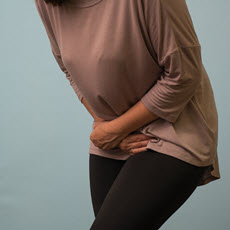
The pelvic floor is a group of muscles and other tissues that form a sling or hammock across the pelvis. In women, it holds the uterus, bladder, bowel, and other pelvic organs in place so that they can work properly. The pelvic floor can become weak or be injured. The main causes are pregnancy and childbirth. Other causes include being overweight, radiation treatment, surgery, and getting older.
Common symptoms include:
- Pelvic Floor Disorders (National Library of Medicine)The pelvic floor is a group of muscles and other tissues that form a sling or hammock across the pelvis. In women, it holds the uterus, bladder, bowel, and ...
- Symptoms, causes, diagnosis, and treatment of a cystocele, a common condition that occurs when the bladder bulges or drops into the vagina. ... Cystocele, ...
- How Are Pelvic Floor Disorders (PFDs) Treated?
 (Eunice Kennedy Shriver National Institute of Child Health and Human Development) Treatments for pelvic floor disorders may be nonsurgical, surgical, or a combination. Some women who do not have symptoms may not need treatment.
(Eunice Kennedy Shriver National Institute of Child Health and Human Development) Treatments for pelvic floor disorders may be nonsurgical, surgical, or a combination. Some women who do not have symptoms may not need treatment. - About Pelvic Floor Disorders (PFDs)
 (Eunice Kennedy Shriver National Institute of Child Health and Human Development) A pelvic floor disorder occurs when the pelvic muscles and connective tissue weaken or are injured. Learn more.
(Eunice Kennedy Shriver National Institute of Child Health and Human Development) A pelvic floor disorder occurs when the pelvic muscles and connective tissue weaken or are injured. Learn more. - How Are Pelvic Floor Disorders (PFDs) Diagnosed?
 (Eunice Kennedy Shriver National Institute of Child Health and Human Development) Pelvic Floor Disorders/Diagnosis and Tests ... Pelvic Floor Disorders
(Eunice Kennedy Shriver National Institute of Child Health and Human Development) Pelvic Floor Disorders/Diagnosis and Tests ... Pelvic Floor Disorders - A cystocele is an downward outpocketing or hernia of the bladder towards the vaginal opening. The weakening of the ...
- Pelvic Floor Disorders/Clinical Trials ... Pelvic Floor Disorders
- Anterior vaginal wall repair is a surgical procedure. This surgery tightens the front ( anterior ) wall of the vagina. ... The anterior vaginal ...
- Pelvic Floor Disorders/Clinical Trials ... Pelvic Floor Disorders
- Pelvic Floor Disorder Featured Articles : Pelvic Floor Disorder April 05, 2019 Study connects dots between vaginal birth, pelvic floor disorder A recent NIH study found that women who gave ...



